@newell-post said in New Toy (not a trumpet):
Sorry. I used to love cars. Now I hate cars. They are a necessary evil, but I just want ones that start and run reliably and drive comfortably.
How about motorcycles? I like them, too…
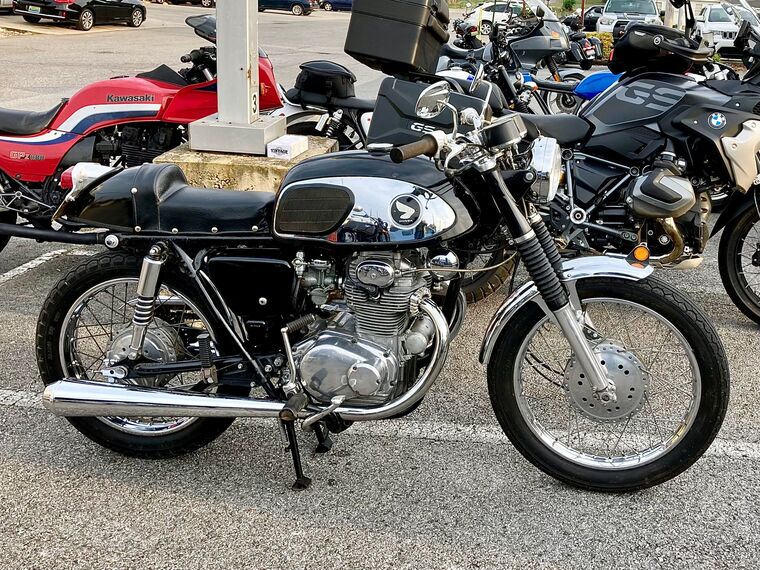
@newell-post said in New Toy (not a trumpet):
Sorry. I used to love cars. Now I hate cars. They are a necessary evil, but I just want ones that start and run reliably and drive comfortably.
How about motorcycles? I like them, too…

@j-jericho said in New Toy (not a trumpet):
@dale-proctor How many warped/cracked cylinder heads did you have to replace on your Datsun?
I had to replace the entire engine - there was a crack in the block. Before that, I replaced the coil, alternator, and the water pump. New rear leaf springs, shocks, brakes, etc. followed. Then a new rear axle and differential gears. When a couple teeth broke off 2nd gear, I parked it and waited till spring, put the top down and put a For Sale sign on it, and a guy bought it and towed it off…
My first sports car was a 1967 Datsun 1600 Roadster, bought used in 1974. It was a problem car and I eventually sold it a few years later, needing a transmission rebuild.
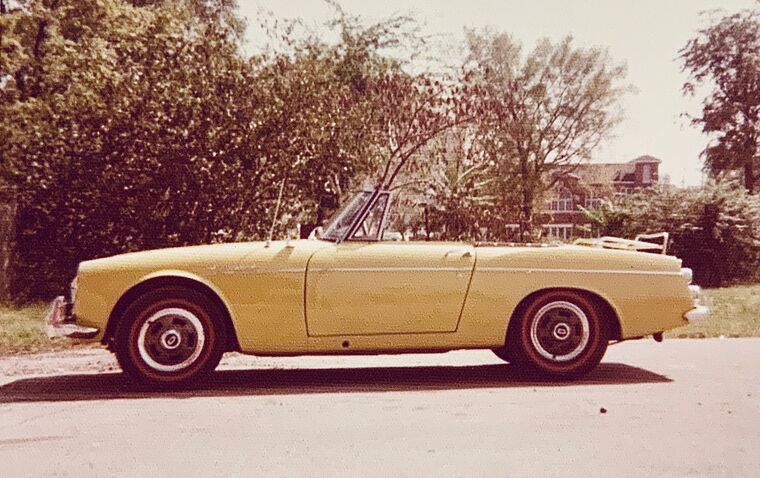
My second convertible (I won’t call it a sports car…lol) was a 1970 VW Cabriolet bought used in 1980. Fun car, had wooden bows in the top and a wood frame around the glass rear window. I kept it about 6 years and sold it for a profit.
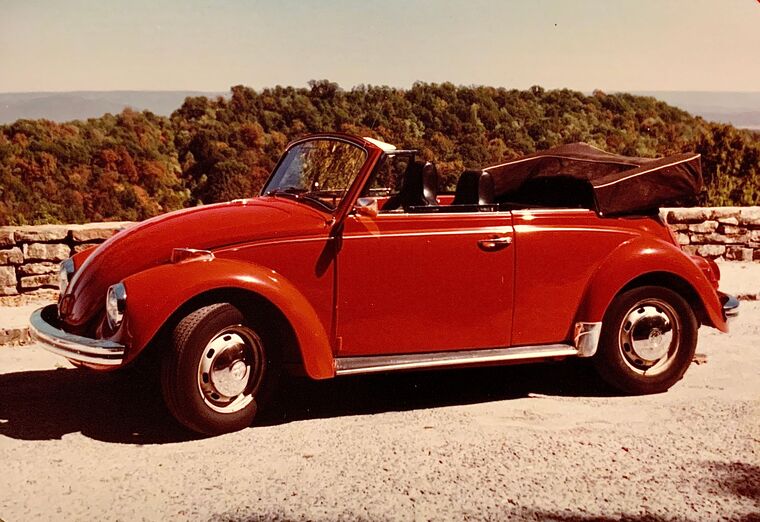
@dr-go said in New Toy (not a trumpet):
I just got this one for my wife... for an anniversary present . It's a bit on the other end of the size spectrum... but it is in black:
When something like that pulls up beside me and I look over at it, all I see are the wheels…lol
Still enjoying the little roadster. Took a couple photos of it last night on the way home from orchestra rehearsal. There’s a recess in the trunk that’s a nice fit for a trumpet or cornet case…
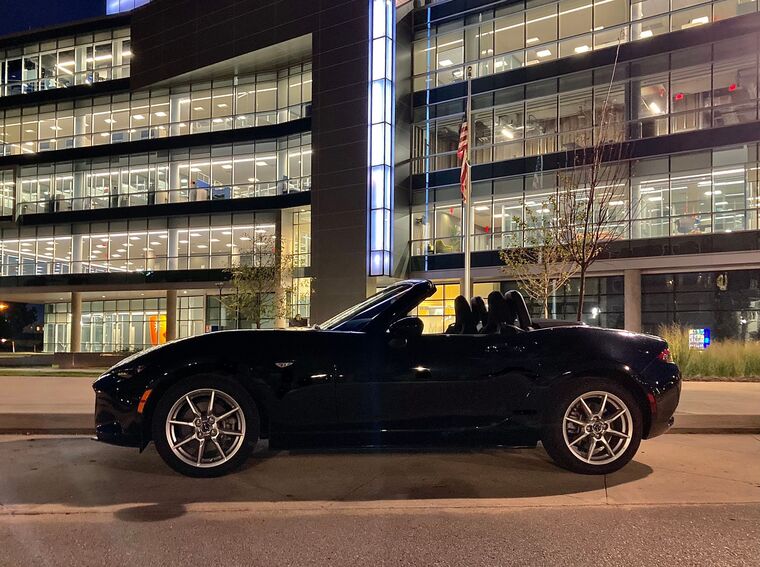
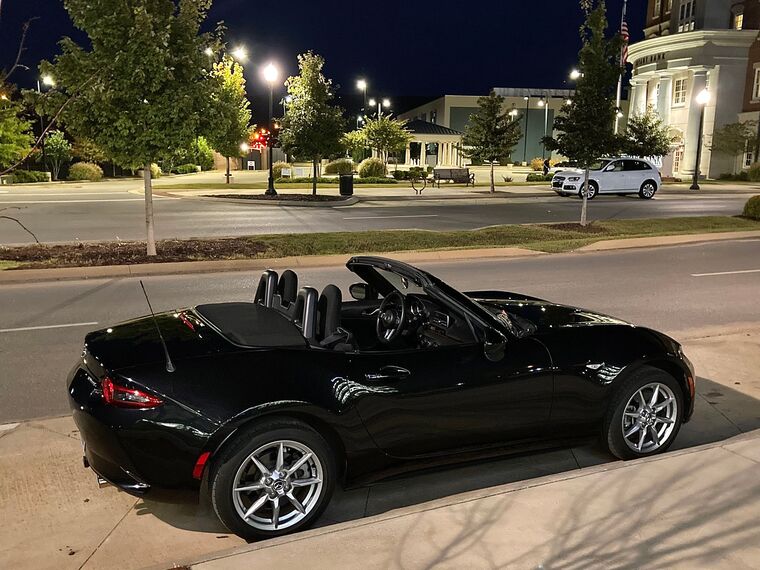
Very interesting! Those brought to mind this video of Egyptian trumpets being played. Authentic, slightly haunting sound - nothing like those old Hollywood movies. 
I sat next to John Williams in a trumpet section years ago. No, not that John Williams…lol
@administrator said in Latest Steal:
@dale-proctor said in Latest Steal:
@dr-go said in Latest Steal:
@dale-proctor said in Latest Steal:
I paid $150 at a junk store for this ML 43…lol
(I added the case cover later, though)
Wow! JUST WOW.
Full disclosure - it was about 30 years ago, but I still play it. Great instrument.
Ok, so maybe $500 today? Still good.
Yeah, as a percentage of the new price at the time, probably around $450 today.Around that same time, I bought a 1955 Mt. Vernon ML 43 trumpet at a junk auction for $60. It was pretty beat up, but I had it cosmetically overhauled and it looked like new. I kept both trumpets for years, but eventually sold the Mt. V on eBay for a little over $2000. It played great, but not any better than the $150 one, which was worth about $800 at the time. I needed a good cornet for brass band, so the Mt. Vernon was put on the auction block.
@dr-go said in Latest Steal:
@dale-proctor said in Latest Steal:
I paid $150 at a junk store for this ML 43…lol
(I added the case cover later, though)
Wow! JUST WOW.
Full disclosure - it was about 30 years ago, but I still play it. Great instrument.
I paid $150 at a junk store for this ML 43…lol
(I added the case cover later, though)
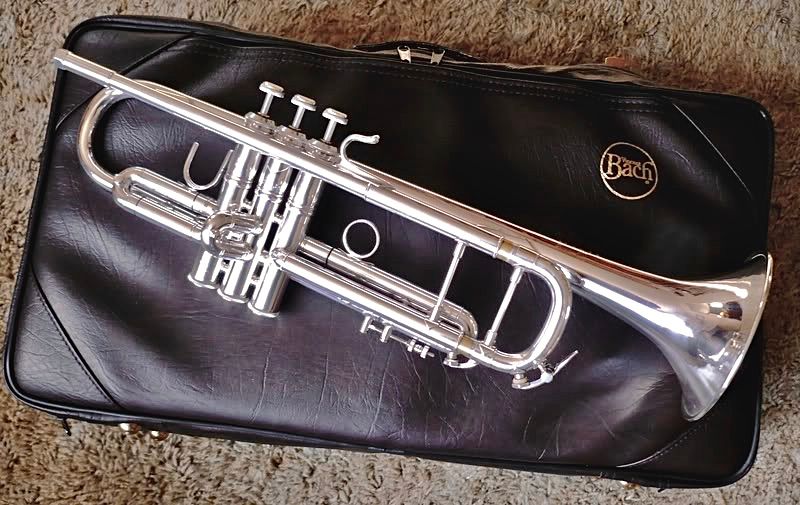
Has the bell engraving been buffed a little too much, or is it just the photo? Should look more like this...
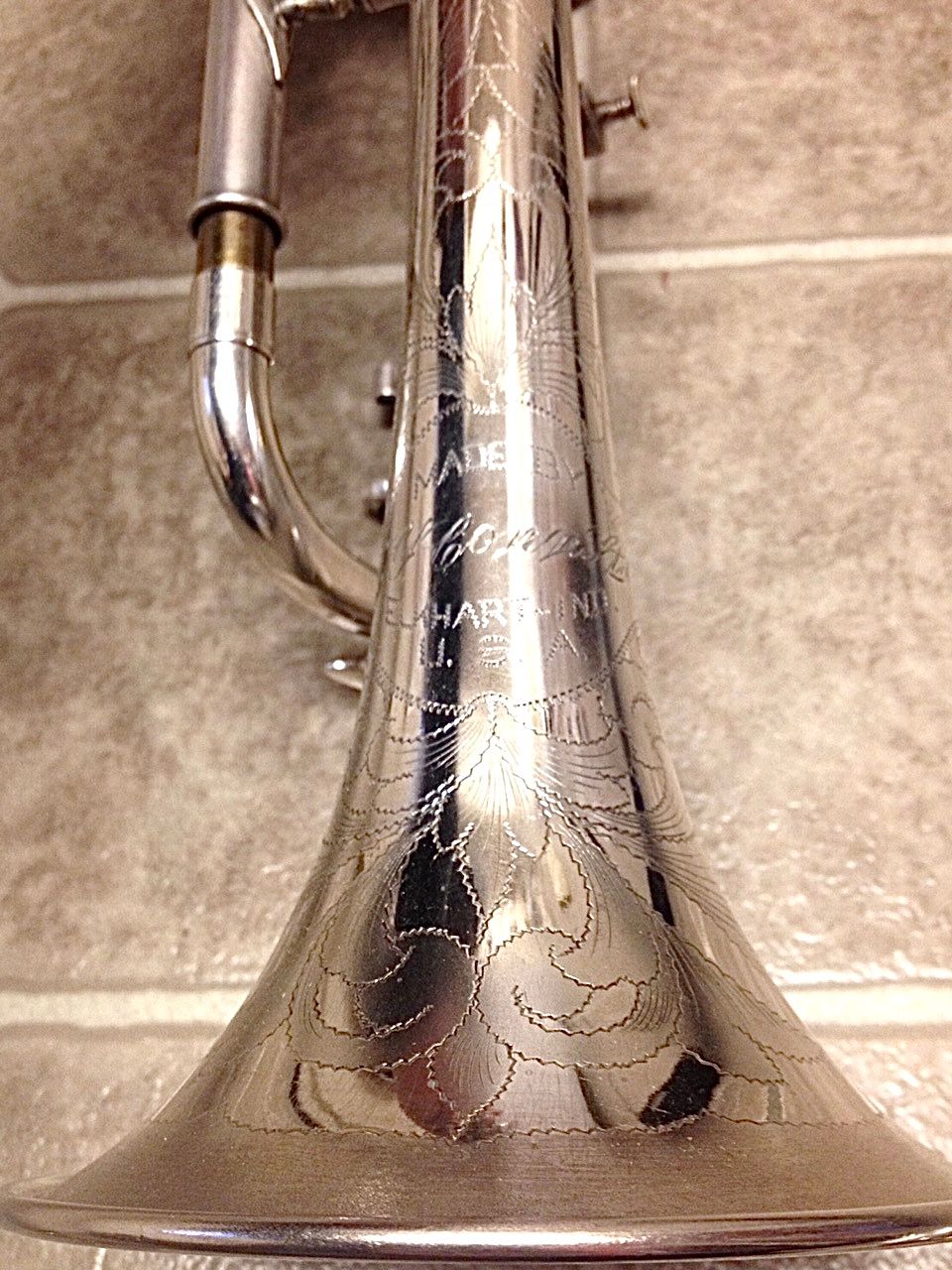
I don’t think you’ll find many (or any at all) professional players, past or present, using an Ambassador outside of the jazz/big band world. I used an Ambassador trumpet with good success in a big band for a few years, but it wasn’t acceptable for classical playing.
I’ll leave any band that requires that nonsense. I play mainly for enjoyment, and that’s not enjoyable. Pure silliness - how on earth can you get a good breath while playing? If the mask transmits air well enough to get a good quick breath, it won’t stop any germs or viruses. I’ve already played a gig (late last year) that those were ‘strongly suggested’, and they had free ones for everyone. I declined, as did about half the other brass players. We were already seated about 8’ apart and wore masks anytime we weren’t playing.
A few photos of the whole horn and a few detail shots of the valve block, water keys, braces, and mouthpiece receiver would go a long way helping identify who made it, since it’s probably a stencil horn.
I like gold plated mouthpieces, too, and have a few, but the price of gold has gotten a little out of hand. I can think of better ways to spend my money...
I took a few photos today of my 1993 Bach 184 cornet. I’ve owned it since the early 2000s, bought it used. Gold brass bell, large bore, ‘Stradivarius Deluxe’ engraving. It’s a very pretty instrument, even though I’m gradually wearing through the lacquer in spots, and it plays beautifully.
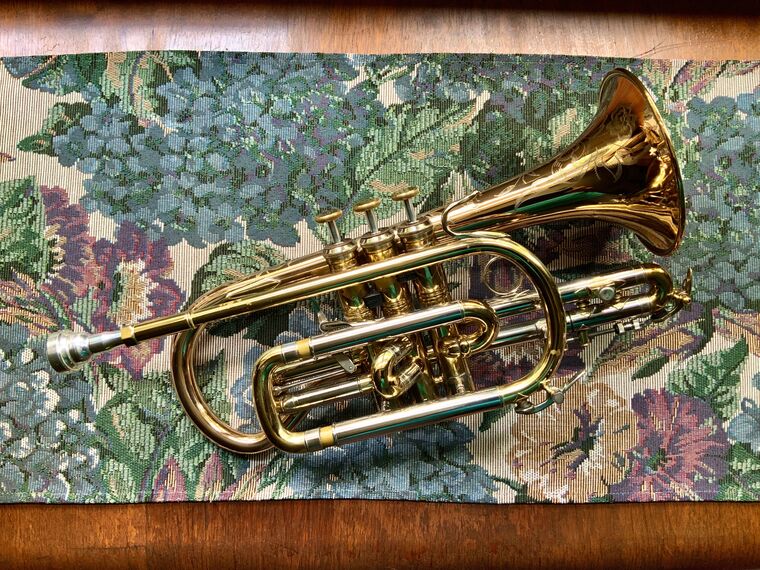
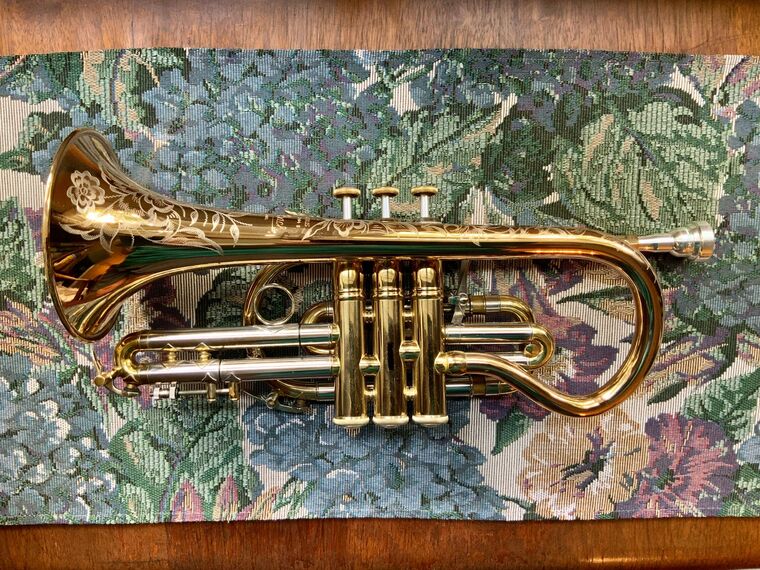
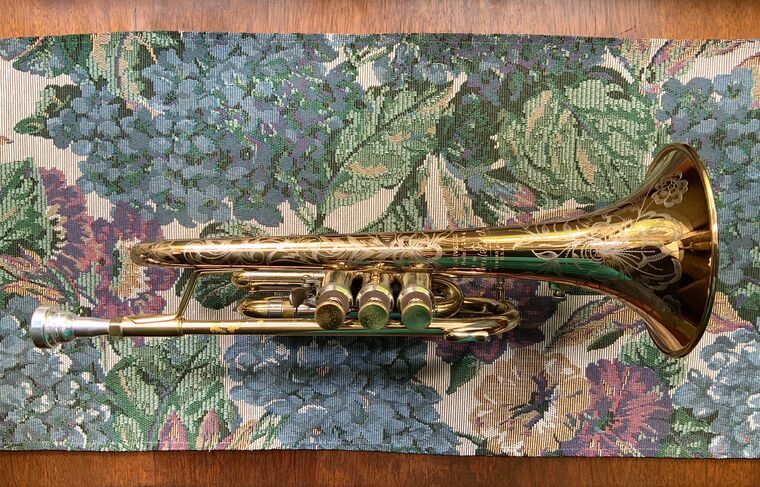
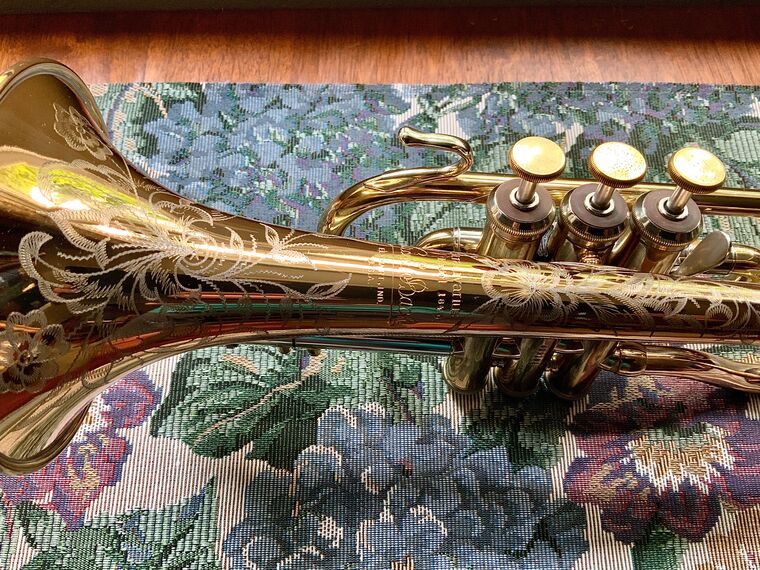
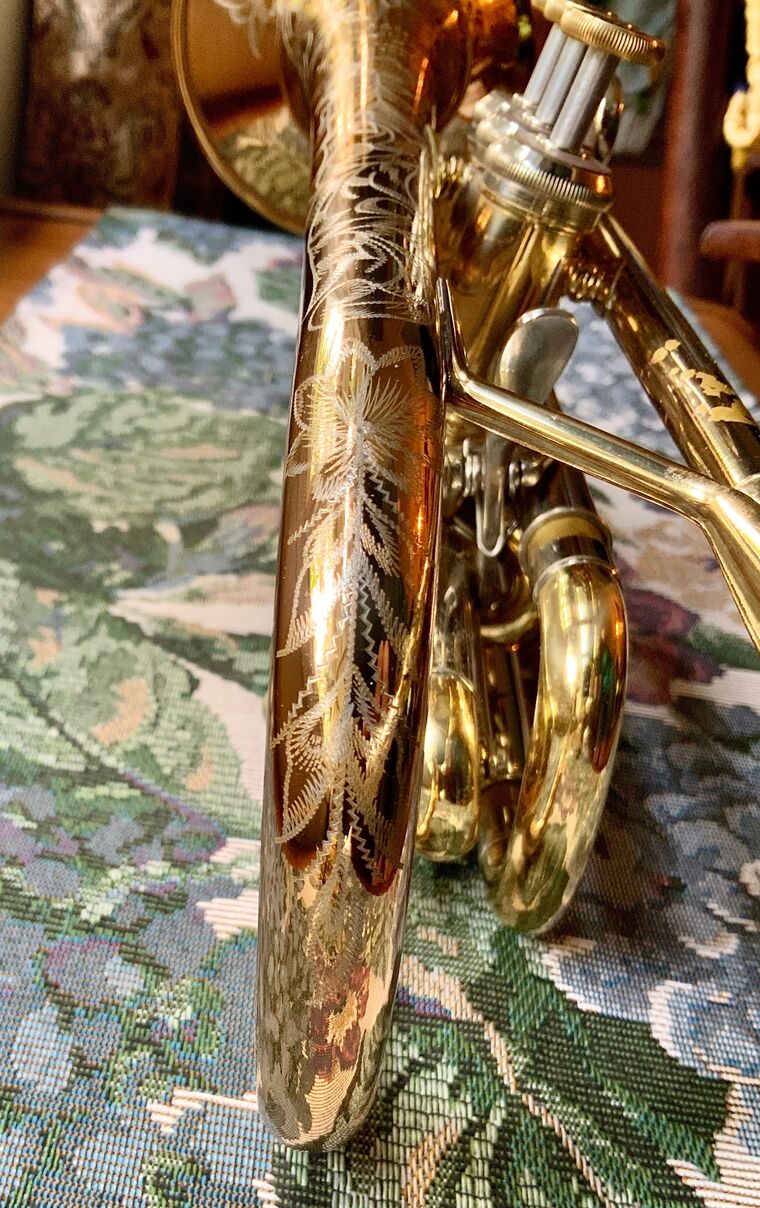
Yes, that was a steal! I can tell by the pinky hook that it’s an older one, too, from the ‘70s or earlier. I have a standard 43 from 1976 and it’s been a keeper since I bought it in the early 1980s.